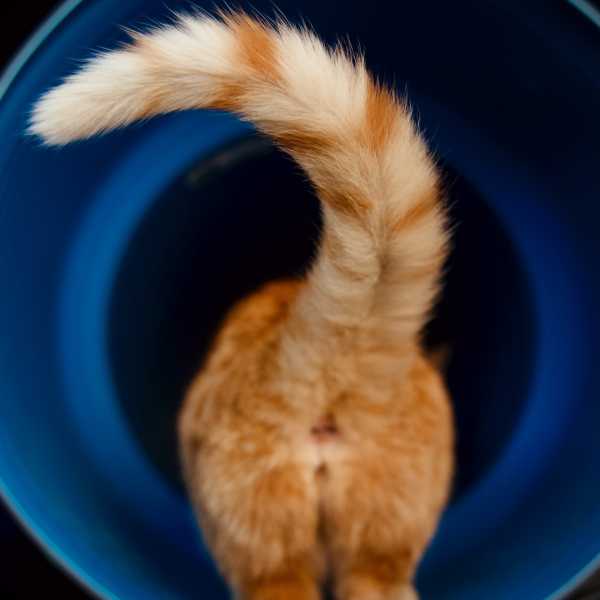
Rabbit Welfare Association & Fund - Indoor Rabbit Housing
Posted on 19 April, 2021
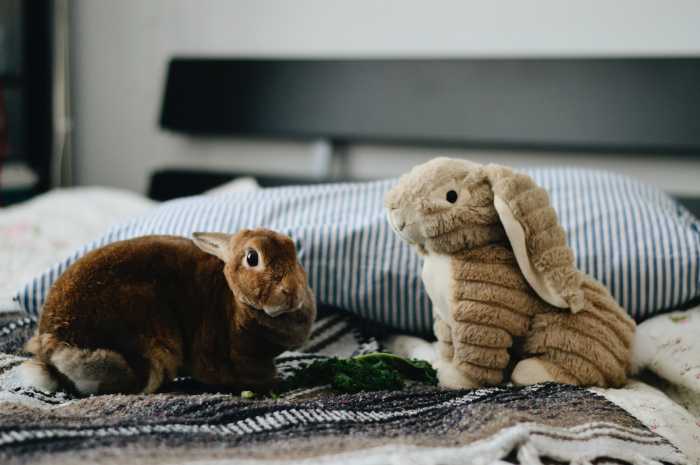
Photo by Jennifer Chen on Unsplash
Written by Rabbit Welfare Association & Fund
Minimum Size
Let’s just start with a reminder of our space guidelines:
A single enclosed area of at least 3m x 2m by 1m high. This can include the sleeping quarters, and makes up a footprint (accessible area of the ground or floor) of 3m x 2m.
For those who prefer imperial measurements: 3m=9’10”, 2m=6’7″, 1m=3’3″.
The following is a good indoor set up. There are places to hide (all with 2 entrances and exits) the floor is a non slip lino, and there is soft vet bed for the rabbits to rest on. There are 2 litter trays and hay is freely available. This is a 3m x 2m area, so you can see that a lot can be offered in that space.
House rabbits – Home, Sweet Home
Sharing your home with rabbits can be a wonderful experience but it’s not something to be taken lightly. If you don’t know what is involved before making the leap you may quickly realise that house rabbits are not for you. The house needs to be ‘bunny proofed’ and the rabbits will need their own safe area.
House rabbits will learn to love you, they may well love their toys… but they also need a companion of their own species to share their home and their lives. As with outdoor rabbits, you most likely aren’t with them 24/7, your house rabbit needs company so you will need at least one other rabbit. Companionship is very important to them.
Rescues are already overcrowded and it’s harder to find a place for rabbits that are not used to being outdoors. Don’t take on house rabbits unless you can live with the results. Read on to see what’s involved and then consider carefully!
Where
The big question you need to ask yourself is where will they live?
Remember that house rabbits need at least as much space as outdoor rabbits. Wherever you decide is most suitable, your rabbits need to be safe from:
- Other pets
- House plants that may be poisonous
- Electric wires
- Being trodden on (this is a real concern!)
- ‘Escaping’ into a dangerous outside environment.
Areas your house rabbits access will need some modifications, or your rabbits will modify them for you! Rabbit-proofing your home is essential and you have to be aware that there will be nibbles, spills, possibly an occasional toilet accident plus an awful lot of hair to vacuum up in the moulting season. Young rabbits are especially keen to explore things (with their teeth most often) and supervising them alone is not going to prevent accidents or damage. You do need to ‘rabbit proof’ properly.
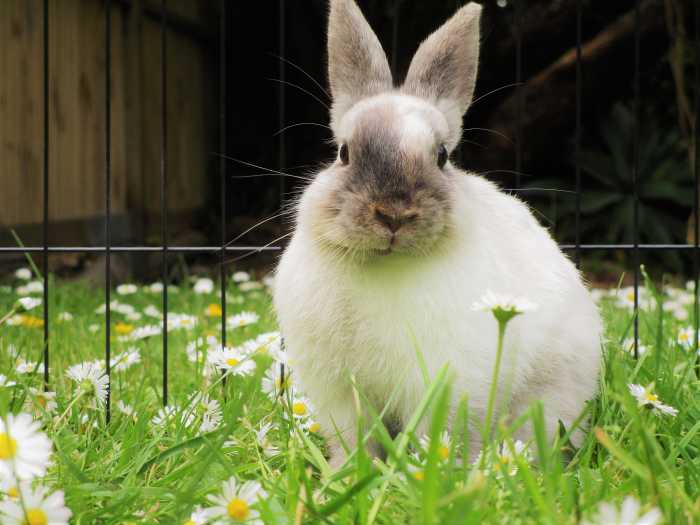
Photo by Misha Walker on Unsplash
So what are the options?
Free range
This is where the rabbits are given the run of most, if not all of, the house. Obviously this is a big commitment and so the points listed below should be considered even more carefully.
If you choose to go down the free range route, we strongly recommend you start with a limited area where they will have their toilet and carry out their litter-training, especially with young rabbits. Make sure they feel secure and comfortable there (and are toilet trained in the smaller area) before opening up other areas of the house.
See the ‘litter training’ advice below for more information.
A particular room
This tends to be a utility room, kitchen or conservatory, often with solid flooring that is easy to clean, unlike carpet.
Note that rabbits often slip on smooth floors, so newspapers, carpet tiles or runners are useful.
Be aware that conservatories can get very hot in summer so unless you can manage the temperature adequately, choose another room.
Part of a room
This is an area in a room given over to the rabbits with a large run or enclosure. Some people use dog crates and/or adaptable puppy pens for an indoor enclosure.
It has to be at least as large as the recommended minimum size of 3m x 2m x 1m high.
FAQ: Can houserabbits play in the garden?
Take a look at our page about this.
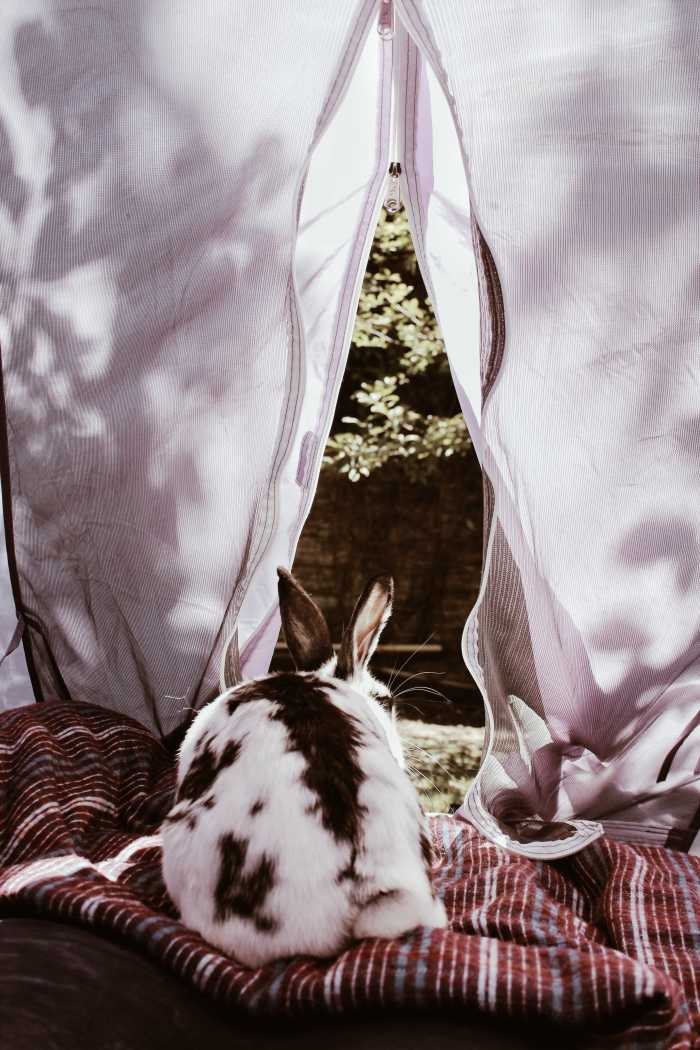
Photo by Julián Gentilezza on Unsplash
Preparation
Your home needs to be protected from chewing (for the whole of your rabbits’ lives) and toileting (until they are neutered and house-trained). This means that your rabbits will be protected from danger and mischief.
While these preparations take some effort, they are vital. So, let’s think about protecting all areas they will access before deciding where in the home they might live.
Litter training
Rabbits are generally quite easy to litter train, although occasional accidents may occur. The quickest way to house-train your rabbits is to start off with a litter tray in a smaller area (put some hay next to the litter tray – rabbits like to poo and chew at the same time). Place the tray where they have chosen to “go”, or put some of their droppings and urine in the tray so that it smells right and encourages them to go in there. Keep them confined to this area and gradually increase the time and space they are allowed to access only once they are reliably using their tray.
Neutered rabbits are easier to litter train. Entire males can actually spray. Trust us, you do not want them to do that in your house! It is best to neuter both sexes as early as possible, ideally by 6 months of age, so that any hormonal or territorial behaviour has not become ‘learned’ and will be reduced by neutering.
Make sure you use a non clumping bedding, do not use anything clay based, or made from pine. Go for something like Auboise or Megazorb. You could also use newspaper with hay on top. Make sure the tray is kept clean and there is hay to eat while they are in there, but do not bleach it clean or you will remove the smell and they will be less keen to use it.
House plants
There are so many different house plants around that it’s impossible to list them all. A surprising number are poisonous to rabbits and so the only safe thing to do is to assume that they all are. Keep them out of reach and remember that some rabbits like to climb onto furniture, so keep that in mind when considering what is actually out of rea
Electric wires
Have a look around your home: how many cables are exposed?
Cables attract rabbits like magnets! In the wild, while burrowing, rabbits chew through roots and they will treat wires in the same way. You need to protect those wires and keep them away from rabbits both for your own convenience and for the rabbits’ safety. You can do this by covering the cables with ‘cable protector’ and you can get this easily online or from a DIY store. You can also use hosepipe if you are not so fussy or in a hurry! Rabbits can squeeze in to the smallest of spaces so you will need to check the area carefully.
Chewing
Rabbits will chew furniture, door-frames, carpets, clothes and more. Pretty much anything is at risk, especially when your rabbits are young. Make sure you supervise your rabbits at all times whilst they are running free in your house.
Give your rabbits lots of toys and things that you don’t mind them getting their teeth into. Protect anything you don’t want chewed. But please be realistic, they will chew where they shouldn’t, so you’ll either need to accept this or set up your living arrangements so that your rabbits can’t access forbidden items unsupervised (just like most people do with pet dogs) or think again about having house rabbits!
Door frames and skirting boards, and the wooden legs of dining chairs and tables are all rabbit favourites. There are some deterrents on the market but make sure that they are safe for rabbits if you want to use them (contact the manufacturer) but the best way is to either prevent access or provide lots of rabbit suitable alternatives for them to occupy themselves with instead.
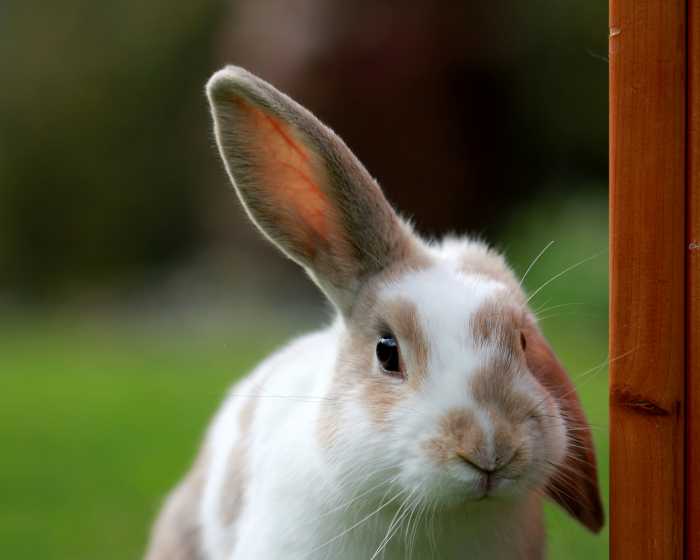
Photo by Sandy Millar on Unsplash
Safety
Slip ‘n’ slide
Because rabbits have furry feet and no pads, they will slip on smooth surfaces. As long as your rabbits aren’t carpet chewers, you can give them mats. If they use your bathroom or kitchen where you will have tiles or some other slippery surface, get some non-slip, washable mats or carpet tiles that can be put down here and there so your rabbits can move safely from one ‘island’ to another.
Rabbits quite literally get under your feet!
Unlike dogs and cats, rabbits will often put themselves exactly where your foot is about to land. You’ll have to develop a sixth sense and learn how to tread very carefully. If you have mobility problems, you need to be particularly careful, as it is very easy to trip over a rabbit!
The great escape
Although a few house rabbits live free-range, most are kept to one room, or part of a room, especially when unsupervised. Whatever you choose, it is likely that you’ll want some areas that are rabbit free. Baby and dog gates are handy but rabbits can squeeze through surprisingly narrow gaps and can jump very high. Take whatever precautions you need to stop them putting themselves in danger, be that from a kamikaze launch from the back of the sofa or leaping out of an open window from a table! Remember to take care when you open your front door too, in case they make a run for it.
Hot to the touch
If you’re ironing, go somewhere your rabbits can’t – it’s just not worth the risk. To our knowledge nobody has yet worked out how to effectively bunny-proof a conventional electric iron whilst it is in use! The same can be said for hair straighteners and lit candles.
Hide away
Just as for outdoor rabbits, house rabbits will need places to hide out so they feel safe and secure, particularly if startled. Cardboard boxes are great for this, with a hole cut at each end. Again, just like outdoor rabbits, they need to display their natural behaviours: digging, running, hiding and jumping so check out our enrichment advice.
In out, in out, shake it all about
If you are bringing outdoor rabbits inside, remember that the time of year could affect them. If they have been outside they will have a winter coat and might find a heated house too warm. You can bring them in gradually, ie to an unheated room, then slowly increase the temperature. If you are bringing them inside in the summer, make sure that you have everything prepared properly. Set yourself up for success! If you increase the chances of litter training, and rabbit proof the room properly you are more likely to make it work. You will not be able to put house rabbits outside in the winter as they will not have the correct coat, so if you are bringing them in for the winter you will have to commit to this until the spring.
Material world
In a new world of sights and smells, and lots of new synthetic things to get their teeth into. You need to keep a close eye on them and check the litter tray every day. This is to make sure that everything is working properly; that they haven’t something they shouldn’t, or become so worried that they are going into gut stasis (this is where their gut slows or shuts down, a very serious condition).
Do give some thought to the floor that they will be living on. Lino type floors are easy to clean, but can be slippy so pick a non slip, or textured type and put a fleece or vet bed over. Some carpets can cause burns to their feet but you could use a non slip lino off cut, or blanket over the top. Remember that all the noises and smells we are used to in the home, such as the TV, vacuum, cooking smells and air freshener will all be scary to rabbits. They have ‘split lips’ which makes them really sensitive to smell so bear this all in mind when you bring them indoors. Conversely, lop rabbits can sometimes be a little hard of hearing, so they might not hear you enter the room and then get a giant shock to look up and see you there. Try a Pet Remedy diffusser to help them feel calm, and make sure they always have access to a bolt hole so that they can go somewhere they feel safe if they feel threatened. Rabbits do adapt to all the noises and smells, they just need time to do it.
You’ll never take my freedom!
There are few things in life nicer than seeing rabbits binky for joy and enjoying their new found freedom. Just be a bit cautious for new house rabbits because they might be unfit and might become injured if they try to go wild before they have built up some strength and muscle. You will need to contain them in a safe area to begin with to litter train them and should only allow them supervised play time out of this area. This will also allow them to build strength and fitness. House rabbits, especially youngsters, can be real daredevils, jumping through the banister to land on the lap of someone on the sofa below, leaping from the back of the sofa, doing the wall of death around the room. Whilst this is all great fun it could be dangerous if the rabbit is not fit, or doesn’t realise how high they are, so please make sure you supervise them properly whilst they are exploring.
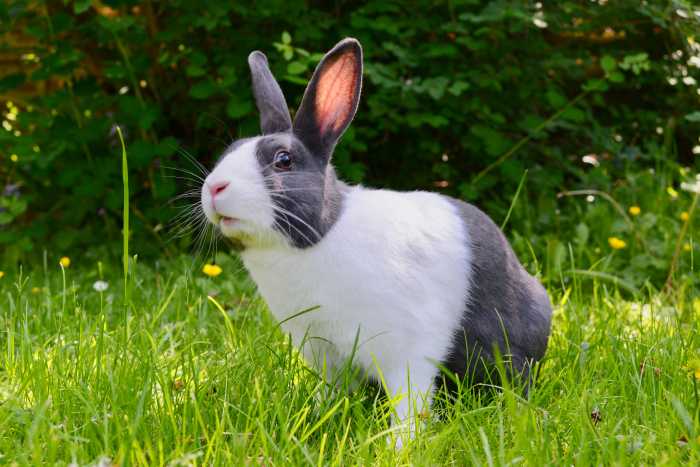
Photo by Gavin Allanwood on Unsplash
Home alone
Ensure that wherever your rabbits live, they are safe when you go out, think about any harm that could come to them and remedy it before leaving. Close any doors you need to, put away any unnecessary items or furniture and make sure they can’t set off any burglar alarms.
To read the original post from Rabbit Welfare Association & Fund, please visit https://rabbitwelfare.co.uk/rabbit-care-advice/rabbit-housing/indoor-rabbit-housing/
Tags:



